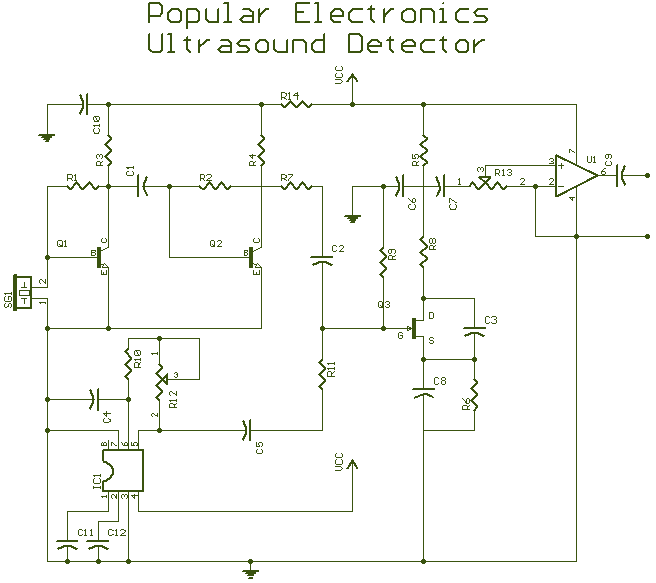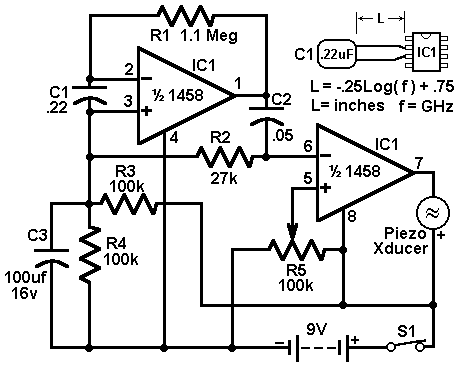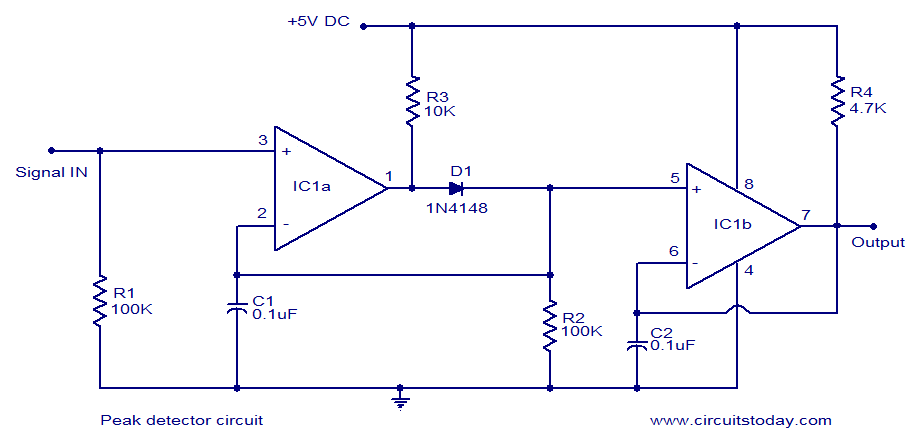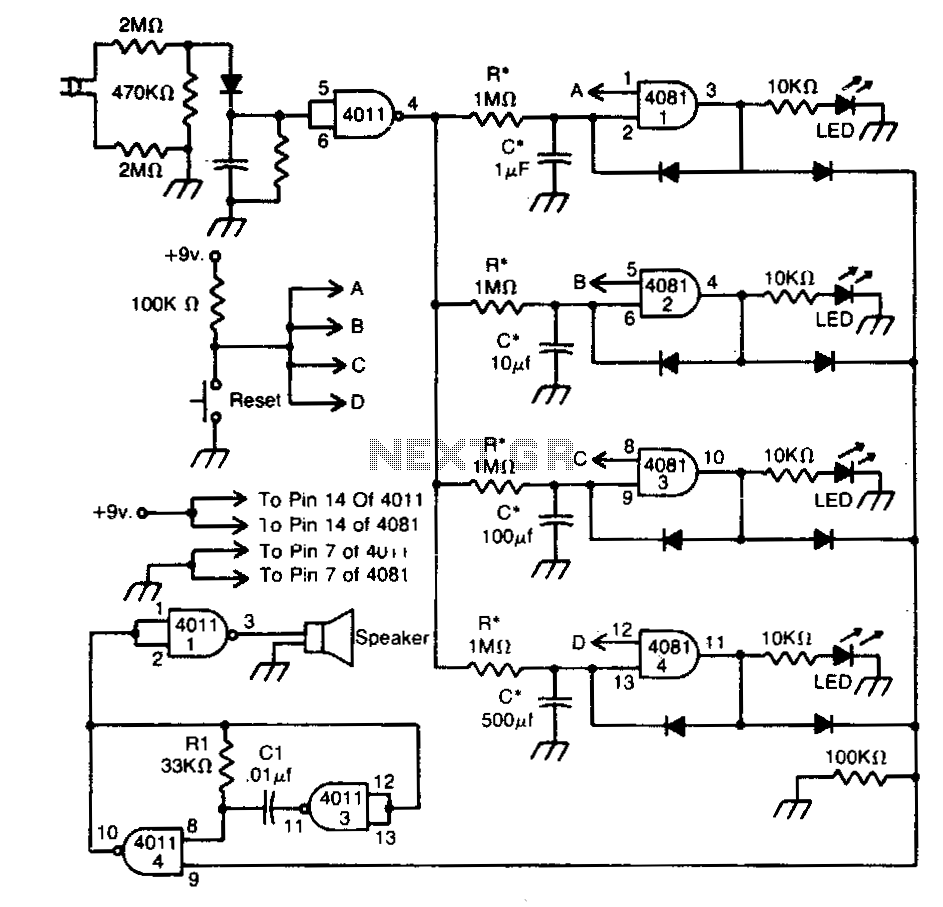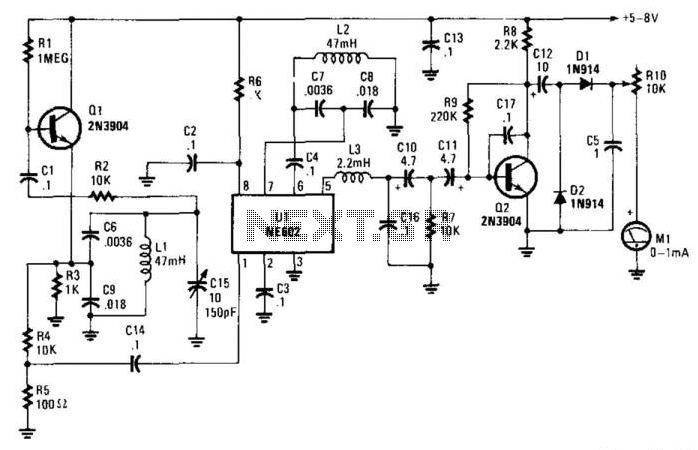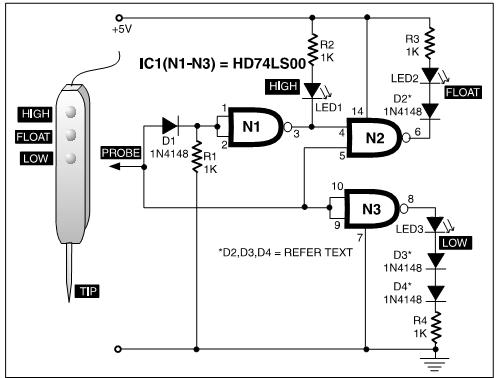
Coincidence Detector for Logic Signals
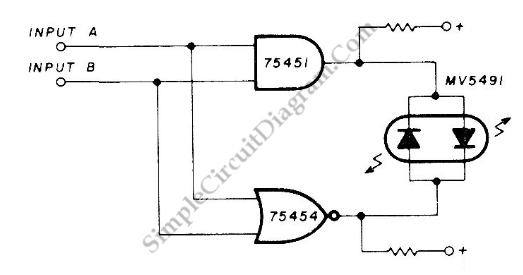
This is a coincidence detector circuit. This circuit is very useful for monitoring complex logic circuits. This circuit has two inputs, A and B. If A and B are...
The coincidence detector circuit is designed to identify when two input signals, A and B, are simultaneously active, indicating a logical coincidence. This functionality is particularly valuable in applications involving complex digital logic systems, where it is essential to monitor multiple conditions or events concurrently.
The circuit typically employs logic gates, such as AND gates, to achieve this detection. When both inputs are high (logic level '1'), the output of the AND gate will also be high, signaling that a coincidence has occurred. Conversely, if either input is low (logic level '0'), the output will be low, indicating no coincidence.
To implement this circuit, two input terminals are connected to the respective inputs of the AND gate. The output terminal of the AND gate is then connected to an indicator device, such as an LED or a buzzer, which activates when a coincidence is detected. The circuit can be powered by a standard voltage source, typically ranging from 5V to 15V, depending on the logic family used.
In more advanced applications, additional features may be integrated, such as debounce circuits to filter out noise or fluctuations in the input signals, and flip-flops to store the state of the coincidence detection for further processing. The design may also incorporate multiple AND gates for detecting coincidences among more than two signals, thus expanding its utility in complex digital systems.
Overall, the coincidence detector circuit serves as a crucial component in various electronic systems, enabling effective monitoring and control of logic states.This is a coincidence detector circuit. This circuit is very useful for monitoring complex logic circuits. This circuit has two inputs, A and B. if A and B are.. 🔗 External reference
The coincidence detector circuit is designed to identify when two input signals, A and B, are simultaneously active, indicating a logical coincidence. This functionality is particularly valuable in applications involving complex digital logic systems, where it is essential to monitor multiple conditions or events concurrently.
The circuit typically employs logic gates, such as AND gates, to achieve this detection. When both inputs are high (logic level '1'), the output of the AND gate will also be high, signaling that a coincidence has occurred. Conversely, if either input is low (logic level '0'), the output will be low, indicating no coincidence.
To implement this circuit, two input terminals are connected to the respective inputs of the AND gate. The output terminal of the AND gate is then connected to an indicator device, such as an LED or a buzzer, which activates when a coincidence is detected. The circuit can be powered by a standard voltage source, typically ranging from 5V to 15V, depending on the logic family used.
In more advanced applications, additional features may be integrated, such as debounce circuits to filter out noise or fluctuations in the input signals, and flip-flops to store the state of the coincidence detection for further processing. The design may also incorporate multiple AND gates for detecting coincidences among more than two signals, thus expanding its utility in complex digital systems.
Overall, the coincidence detector circuit serves as a crucial component in various electronic systems, enabling effective monitoring and control of logic states.This is a coincidence detector circuit. This circuit is very useful for monitoring complex logic circuits. This circuit has two inputs, A and B. if A and B are.. 🔗 External reference
